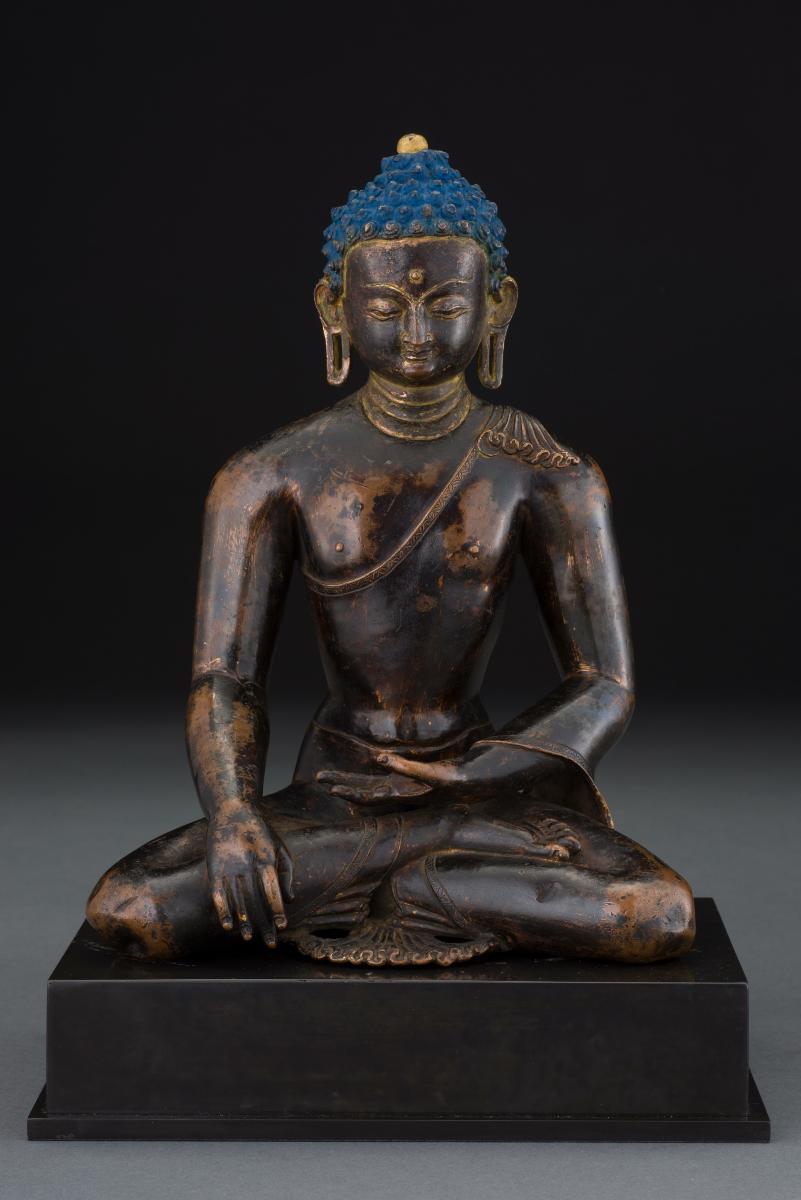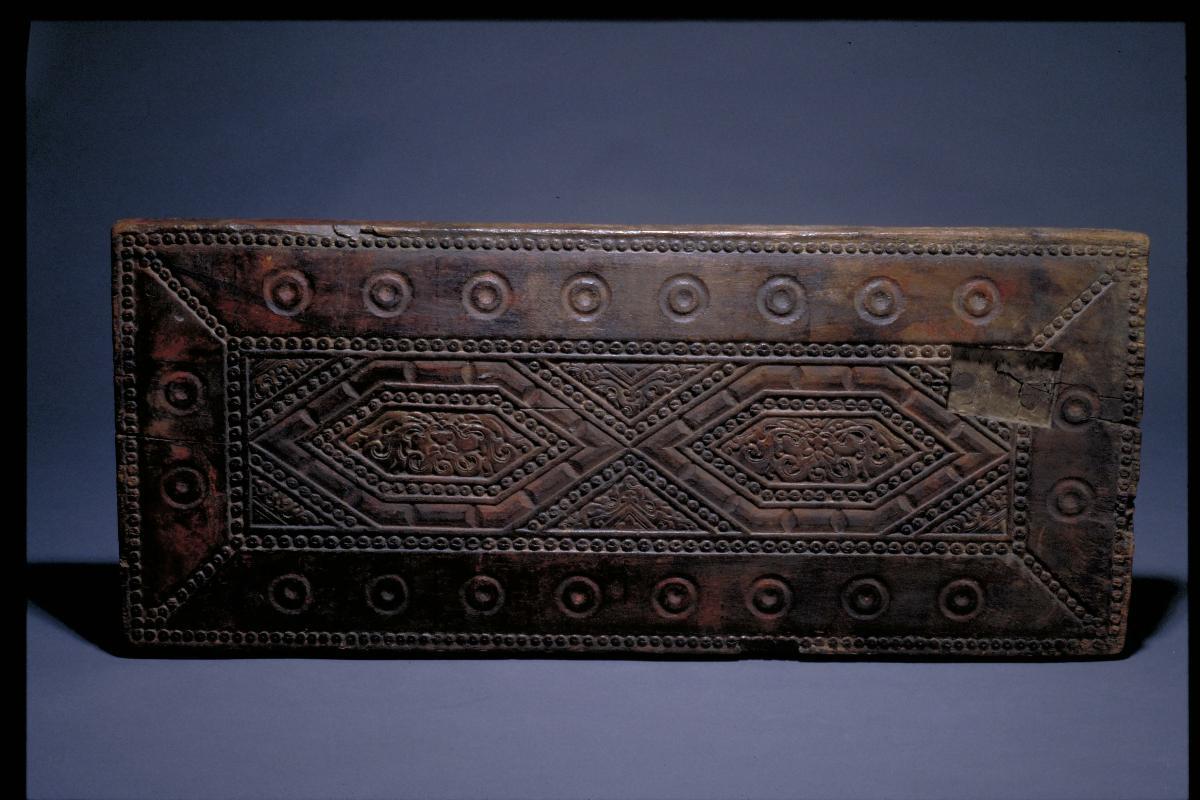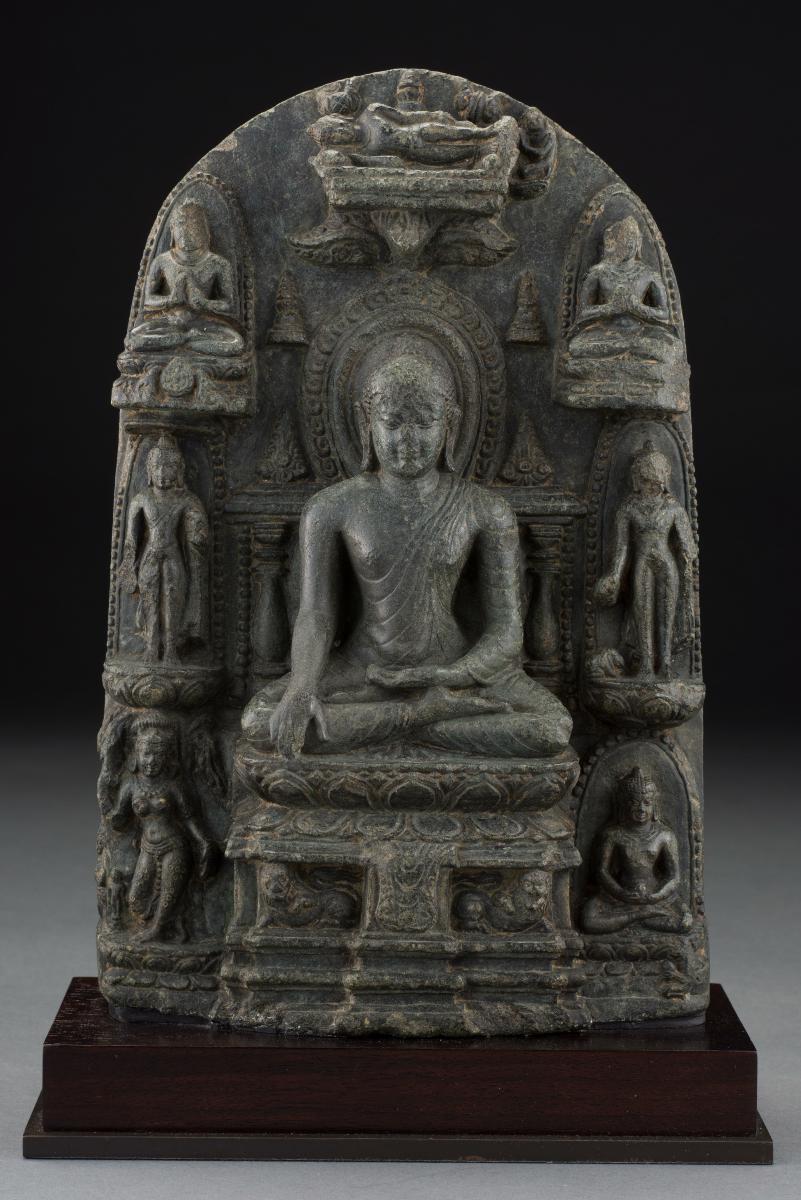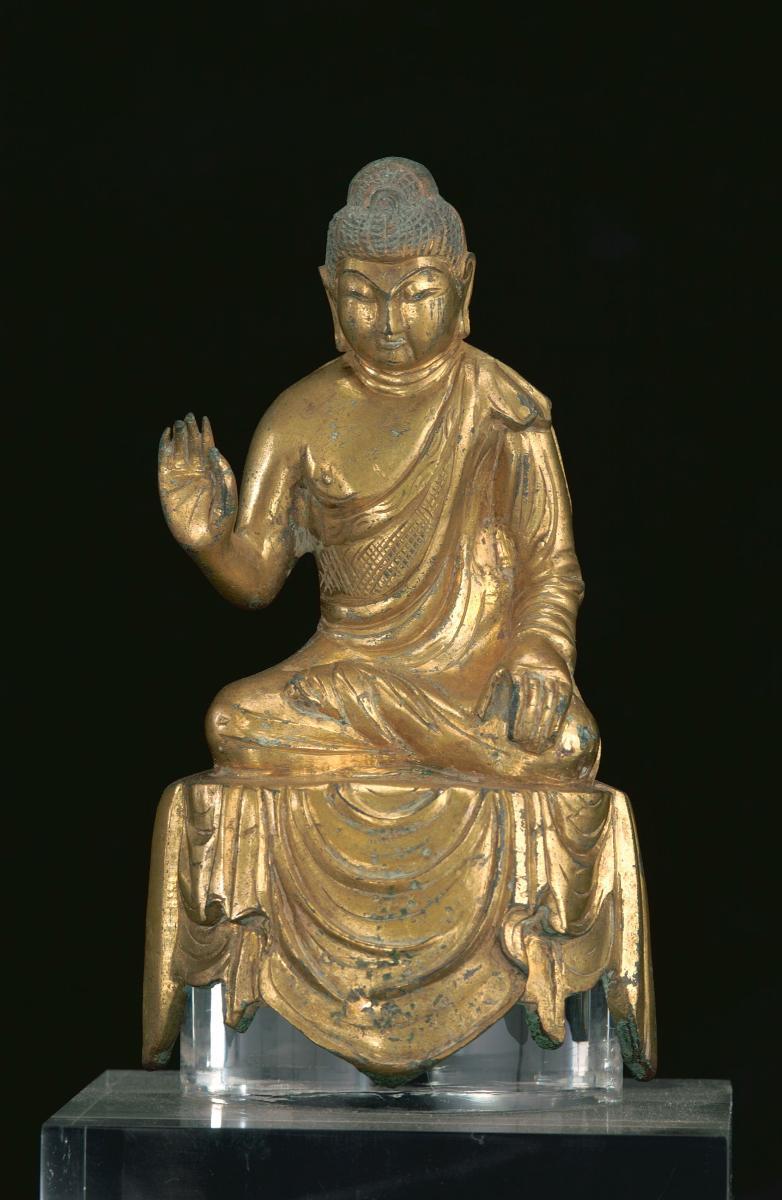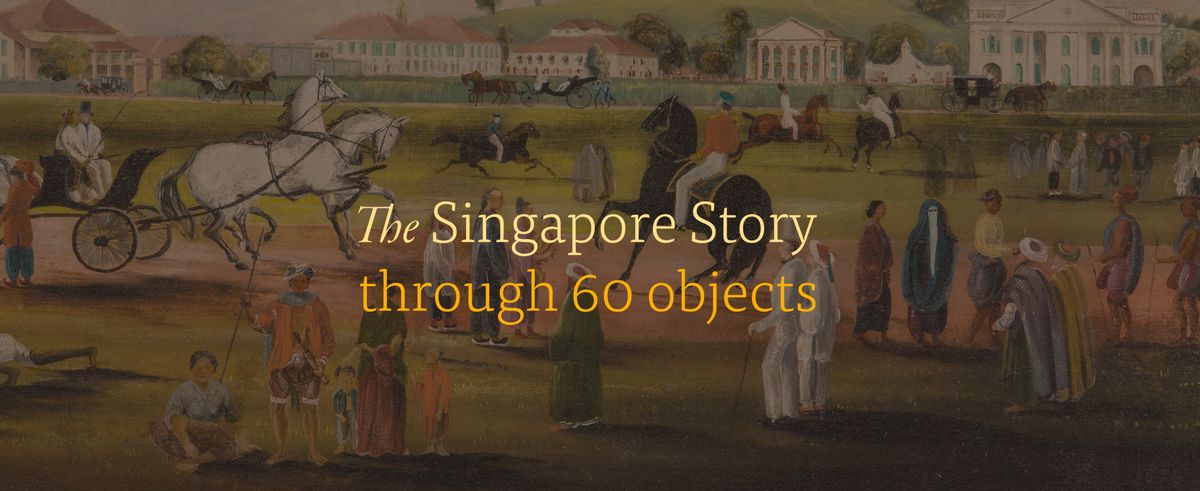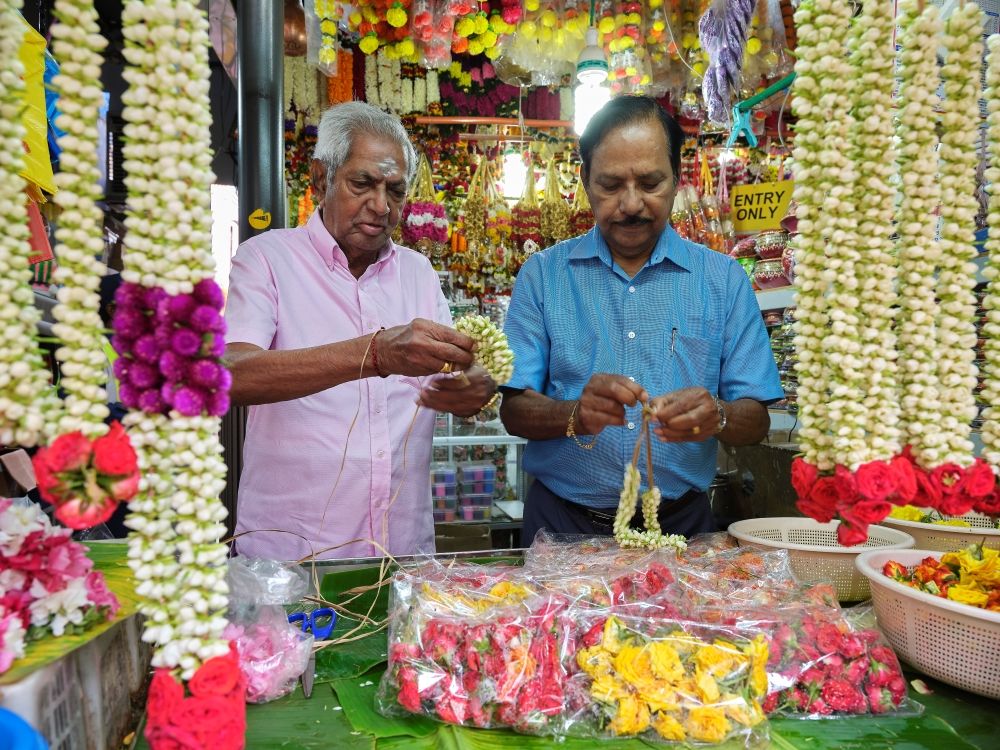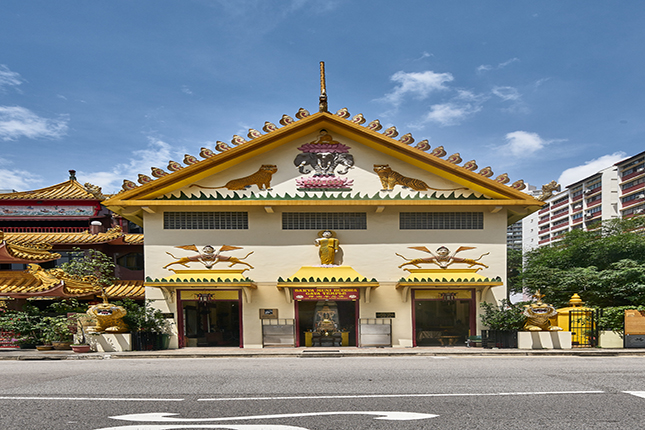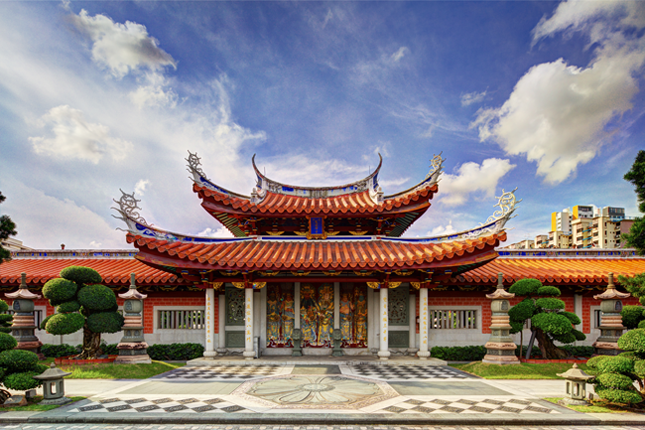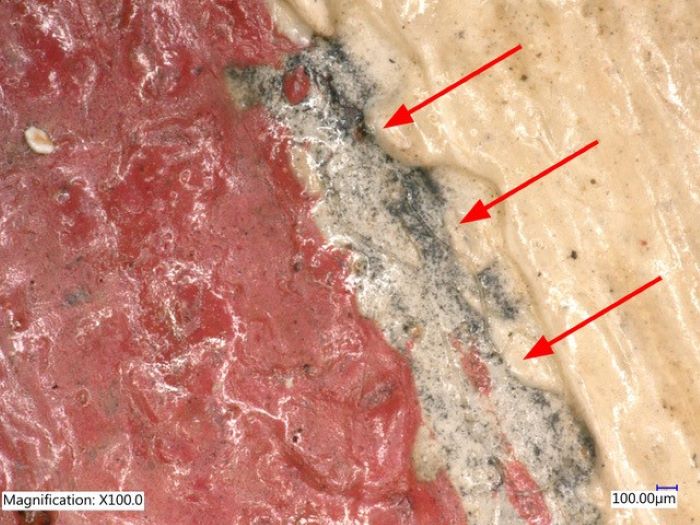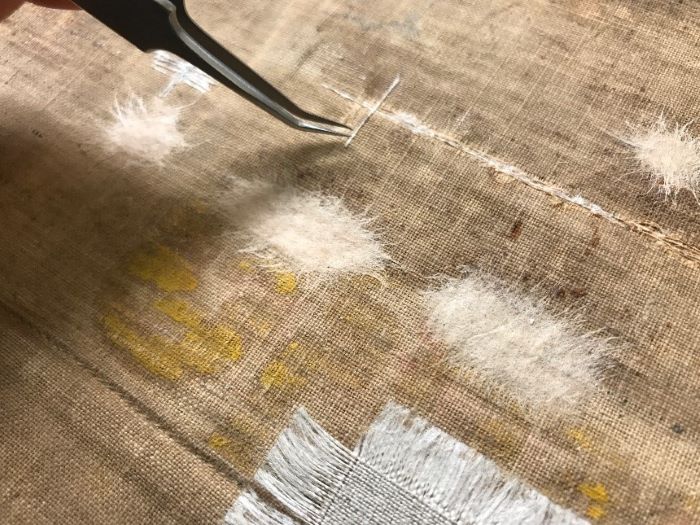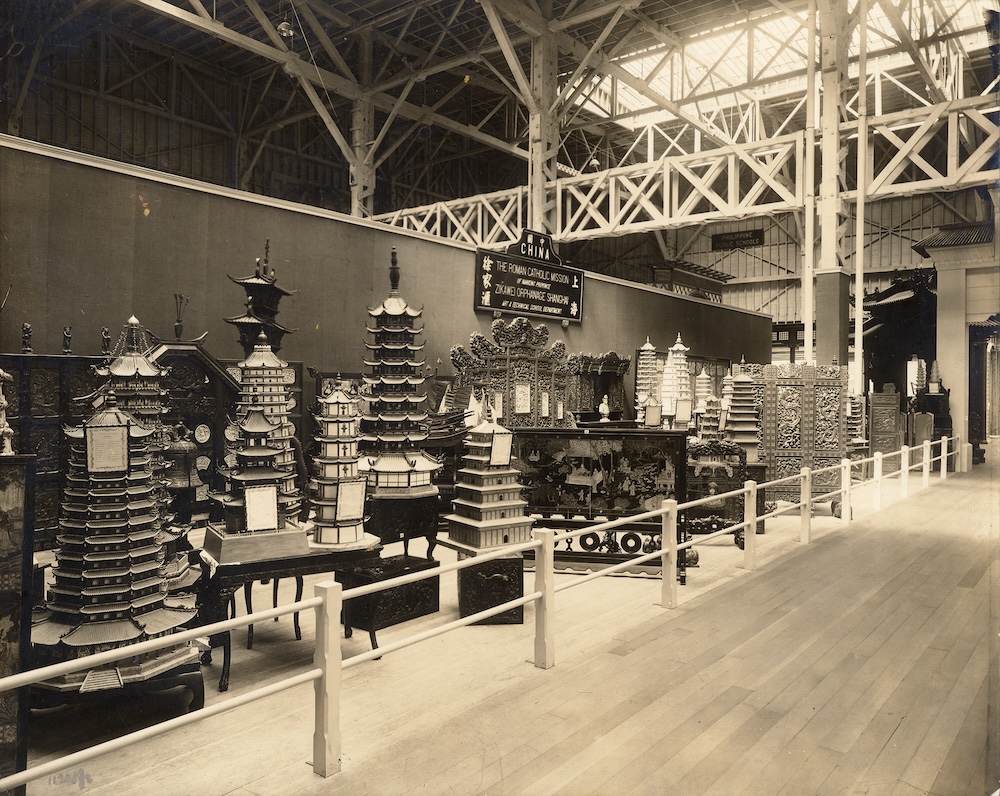This sculpture shows the historical Buddha, also known as Buddha Shakyamuni. Seated in the lotus position, the Buddha points his right hand at the ground and wears a fine robe engraved with floral bands along the edges. The figure was probably produced in Nepal during the early Malla period (1200 – 1480). The forward-facing earlobes, which have clearly visible openings, are often found on early Malla Buddha figures, as are the heavily lidded eyelids, arched eyebrows, and hair with large curls. Robes with engraved bands are typical of Nepalese Buddha figures, but not before the 12th century. The distinctive colouration is the result of tarnishing on the surface of the bronze. Indigo pigment on the hair and traces of gold gilding on the legs indicate that this figure may have been placed in a Tibetan monastery.Several of the supernatural characteristics of the Buddha are in evidence. There is a pronounced ushnisha, the cranial bump that symbolizes knowledge; a circular urna on the forehead that denotes nobility and illumination; and three auspicious lines around the neck. The elongated earlobes are a reminder of the royal origins of the historical Buddha, who wore heavy jewellery as a prince before he gave up his life of luxury to live as an ascetic. The right hand pointed at the ground is a reference to the Buddha calling the earth goddess to witness his right to enlightenment, following his victory over the demon Mara. The Malla dynasty ruled parts of Nepal and Tibet from the 12th to 18th centuries. It was during this time that the national character and distinctive culture of Nepal developed. Malla rulers were enthusiastic patrons of the arts and spent large sums on the production of Hindu and Buddhist art.




